A Planet Worth Defending
First published in Sanctuary Asia,
Vol. 37
No. 4,
April 2017
A Sanctuary Report with inputs from Kripa Raman
By radically altering our natural ecosystems and even the climate, we are pushing species after species to the very brink. In our insatiable greed – for power, for water, for food, for land, for luxuries and for comfort, and in our ignorance and apathy, we are collaborators in the destruction of the planet. Reports of melting glaciers, droughts, species extinction – sadly serve as no deterrent. What then will allow us to understand the rape and pillage we are unleashing on the planet? Will realisation only dawn when it hits our own backyards? That day is not too far – polluted air that is the cause of increasing rates of asthma and cancer, contaminated water and pesticide-laden food causing disease and death, are already realities we must contend with. As long as we choose to accelerate destruction by flooding our ecosystems with toxins and degrading life-giving forests – we are merely creating a predicted dystopia for our children. This Earth Day, Sanctuary asks that we consider some of the vital issues that threaten the very survival of our country. By choosing to ignore these and not taking our leaders to task, we are pushing our people into an ecological crisis of unparalleled proportions. We ask instead that we gift future generations the hopeful utopia that nature is still capable of delivering.
 Photo: Akash Dharankar.
Photo: Akash Dharankar.
The National Animal Conundrum
India hosts more than 70 per cent of the world’s wild tigers, and the last tiger enumeration exercise unveiled a rise in tiger numbers in the country as well as globally. But all is clearly not well. Though we have more areas protected under the Project Tiger umbrella than ever before… we have lost over half of the roughly 300,000 sq. km. of tiger habitat that existed on the day that Project Tiger was launched in 1973! Much of this to dams, mines, roads and commercial monoculture plantations, and possibly an equal amount to encroachments and agriculture. Rich and poor seem equally determined to sink the good ship India. The first three months of the year has already recorded 21 tiger fatalities. Year 2016 was especially a bad one with 98 tiger deaths, with 30 of these confirmed cases of poaching as per the National Tiger Conservation Authority (NTCA). Between 2000 and 2015, there have been over 500 tiger part seizures in India alone. The illegal trade in tiger parts is largely to meet the demand for traditional medicine in China and Southeast Asia. Another drawback has been the slow rate of conviction for poaching and other wildlife crime, even though both government and non-government organisations are working hard on protection measures, education and community-based conservation projects.
The tiger and other umbrella species sit at the top of their respective food chain and serve as indicator species of the health of the Indian subcontinent. If they go, we go.
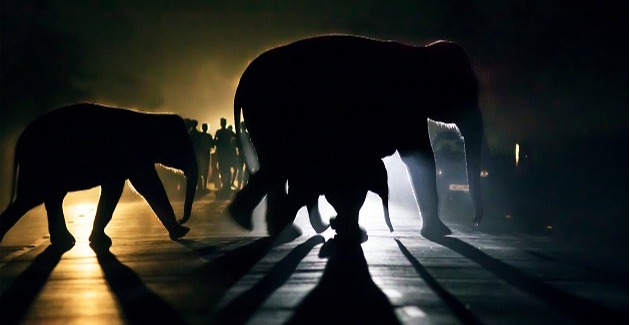
A herd of elephants cross a busy highway in Naxalbari, West Bengal. Photo Courtesy: Avijan Saha
Rescuing The Elephant in the Room
Human-elephant conflict isn’t a new problem, in fact it has its own acronym – HEC. Like a wound that’s been left to fester, it’s gotten markedly worse, with tolerance running low and casualties running high on either side. The country’s breakneck development agenda has torn through swathes of wildernesses that once served as elephant habitats. Herds of wild elephants find themselves trapped in human-dominated landscapes, obstructed from following their migration routes, or islanded in patches of forest that are unable to sustain them. The ensuing conflict, including severe crop depredation, property damage and loss of life, and the routine electrocution, and mowing over of pachyderms on highways and railway tracks, has reached a boiling point. In the past few months alone, Sanctuary has given Odisha the unenviable moniker of being ‘India’s Elephant Graveyard’, reported on Tamil Nadu’s ‘Elephantine Shame’, discovered records of elephant deaths in Chhattisgarh, urged the authorities of the Numaligarh Refinery Ltd. to demolish the wall that blocks an elephant route in Assam, and launched the ongoing Giant Refugees campaign to demand safe passage and the revival of forest corridors for harassed wild elephants in Odisha. Simultaneously, the Wildlife Conservation Society has been explicit in stating that landscape connectivity is critical to elephant conservation; the Wildlife Trust of India has launched Right of Passage, a monumental effort to restore the identified elephant corridors in the country; and the Nature Conservation Foundation has innovated a clever early warning system to mitigate HEC in the Valparai plateau. Though organisations are working doggedly to implement solutions in conflict hotspots and reconnect de-linked forests, this problem requires the intent, heft and collaboration of the central and state governments. Tragically, elephant corridors lie outside the ambit of notified Protected Areas, and India’s Project Elephant, which was launched in 1992 as a centrally-sponsored scheme, has displayed poor leadership and an inability to meet its objectives. While national representatives never fail to remind other countries that India hosts 60 per cent of the global wild Asian elephant population, they forget to mention that many of these herds are starving, harassed or homeless. If the government continues to view wildlife as a ‘white elephant’ – a troublesome possession that stands in the way of economic goals – there is little hope for India’s National Heritage Animal.
The Direction of Water
The river-linking idea was first mooted by Prime Minister Atal Bihari Vajpayee in 2008, and has been pushed by the current government despite warnings that building dams, canals, and reservoirs to shift water from the Brahmaputra and lower Ganges basin to water-scarce regions in western and central India could result in destroying the very fabric and landscape of the country.
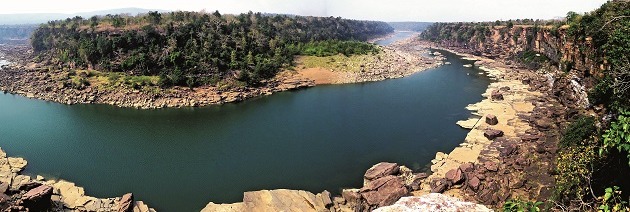
A view of the Ken river in the Bundelkhand region of central India. Photo Courtesy: A. J. T. Johnsingh/Public domain
In 2016, the Union Water Resources, River Development and Ganga Rejuvenation Minister Uma Bharati threatened to go on a hunger strike if the contentious Ken-Betwa River Linking Project was not cleared by the regulators, but this hasn’t kept India’s environmentalists from critiquing the disastrous project. First prioritised in 2004, with the ambition to transfer water from the Ken river to the Betwa basin in parts of Madhya Pradesh and Uttar Pradesh, the project has been haunted by allegations of manipulations, misinformation, misconduct and violations, as well as concerns over its ecological impact. In August 2016, the Standing Committee of the National Board for Wildlife recommended the project, despite the fact that it will submerge or adversely affect about 163 sq. km. of Critical Tiger Habitat of the Panna Tiger Reserve, and sever the western forests of the park. It will also destroy the Ken Gharial Sanctuary, for which no clearance has been sought or obtained. The NBWL proposal to reduce the dam height was rejected without any credible response, and its directive to remove the power component of the project out of the reserve would require fresh design and impact assessment that remain unimplemented. While the Ministry of Water Resources claims that the last hurdle to the project (clearance from the NBWL) has been overcome, South Asian Network for Dams, Rivers and People has pointed out that the project has not yet received environmental clearance and forest clearance, and nor has an inter-state agreement on the implementation of the project, between Madhya Pradesh and Uttar Pradesh, been signed. The NBWL clearance remains challenged before the Central Empowered Committee set up by the Supreme Court. The project still does not have a credible impact assessment. Its claim that it will solve the water problem of Bundelkhand is contradicted by the Detailed Project Report. The Panna Tiger Reserve had seen the local extinction of tigers in 2009, following which a reintroduction effort was successful. The devastation of the park’s habitat would negate this success. The project will also destroy the habitat of a number of endangered and Schedule I species, including gharials and vultures, and will involve the felling of over 15,47,224 trees in just the submergence area! Such a colossal loss of forests, our best carbon sinks and protection against climate change, leaves us with a sinking feeling. The project proponents have been accused of inadequate public consultations, shoddy Environmental Impact Assessment reports, and manipulated figures on water availability. Given the manner in which this project has been advanced despite warnings of grave environmental consequences has ended up uniting both conservationists and human rights activists.
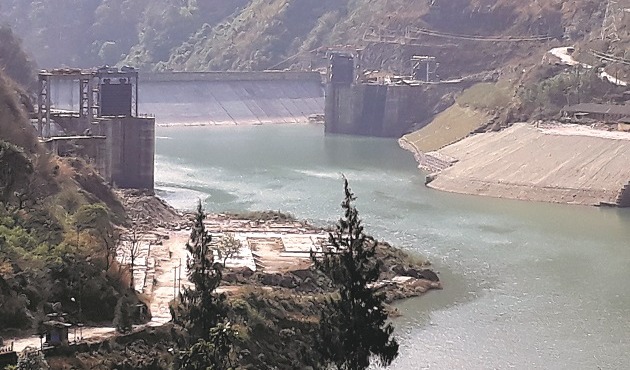
The 1200 MW Teesta III project in Sikkim was completed way behind schedule and at massive multiplication of costs. Photo Courtesy: Neeraj Vagholikar
Panna is just the start. Ultimately the larger river-linking project will displace thousands of people and destroy more forests and other ecological assets than we cannot afford to lose. It is Sanctuary’s position that destabilising our ecological foundations will undermine both our food and climate security in an era of climate change. Instead, we should seek to repair existing hydroelectric and water storage projects. What India needs is to regenerate catchment forests, retrofit turbines, reduce transmission losses, and invest in efficiency up and down the chain from power producers to consumers as well as build upon community-based solutions to restore water security.
Plumbing the rivers of Northeast India
India has not ditched its fascination for large-scale hydropower. From the 60 megawatt Kurishu Hydroelectric Project and the 600 megawatt Kholongchu Hydel Power Project in Bhutan, to transmission lines and hydropower station on the Mahakali river in Nepal, we have also roped in our neighbours to join our self-destructive game.
Neeraj Vagholikar, who has been fighting to highlight the issues in the Northeast, says, “Although the project to transform the rivers of Northeast India as powerhouses of the country has progressed slower than initially expected, there is no reason to rejoice for those who wish to see the ecological and socio-cultural integrity of these magnificent rivers and landscapes intact. Agreements have been signed for over 150 hydropower projects in Arunachal Pradesh alone, while the spate of abysmal environmental governance by the Centre sees no respite. The massive plumbing of the rivers is very much in the pipeline.
In a recent meeting of the newly-constituted Expert Appraisal Committee (EAC) on River Valley and Hydroelectric projects, which appraises projects for environmental clearance, an absurd decision was taken not to entertain submissions by civil society groups and individuals at the stage of Appraisal, as this delays projects. A PhD. scholar, who has worked in the Dibang Valley in Arunachal Pradesh, wrote to the EAC, which was considering the Naveen Jindal group’s 3097 MW Etalin Hydroelectric Project for environmental clearance, with evidence based on camera-trap studies, that the project impact zone is important tiger habitat. The EAC, based on its new decision, did not record a single word in the minutes about this submission and recommended the project for environmental clearance. Thankfully, when the same project was considered for forest clearance, members of the Forest Advisory Committee (FAC) asked for fresh, credible studies before the project is granted clearance, giving temporary respite to the tigers of Dibang valley.”
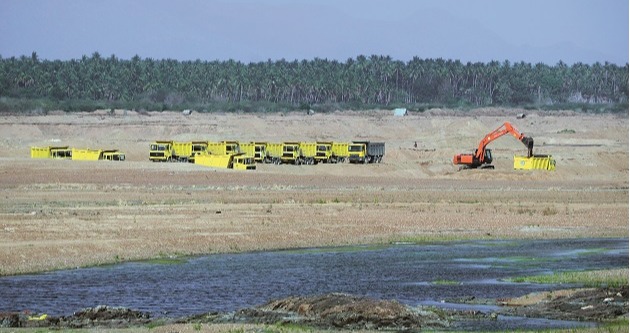
Trucks line up to transport sand from the banks of the Cauvery river. Photo Courtesy: P. Jeganathan/Public Domian
Vagholikar adds, “Despite a promise by the current Central Government to the downstream-affected people of the Brahmaputra valley that cumulative impact assessment studies of multiple hydropower projects will be completed in a transparent and participatory manner, the Centre has finally approved several river basin studies (e.g. Siang, Subansiri, Dibang and Lohit) with absolutely no public consultation in either Arunachal Pradesh or downstream Assam. These studies have been approved in violation of section 35 (6) of the Wildlife (Protection) Act, 1972, which requires prior approval of the Chief Wildlife Warden of Assam since flow variations will be caused in Protected Areas such as Nameri, Kaziranga and Dibru-Saikhowa National Parks due to power generation patterns of upstream hydropower projects.
The 1200 MW Teesta III project in Sikkim, bordering Khangchendzonga National Park and Biosphere Reserve, was recently commissioned, completed way behind schedule and at massive multiplication of costs. The developers now seek increased tariffs through a petition in the Central Electricity Regulatory Commission citing delays and cost escalation due to several reasons, which include natural risks in the Himalaya – floods and earthquakes. Buyers of this electricity do not want the escalated power prices. Plumbing the rivers of the fragile Himalaya comes at great ecological cost, but as we are realising, poor environmental risk assessment has its economic costs too. However, instead of addressing these concerns, the Central Government is planning to classify all large hydropower as ‘renewable’ energy to give a boost to the sector based on a lie - that it is green. Currently only hydropower projects upto 25 MW are classified as renewable.”
Black as coal
In Sanctuary’s June 2016 issue, Lakshmy Raman and Bittu Sahgal, wrote, “The current government has changed the licensing procedure from allocations, to auctions, or competitive bidding and passed the Coal Mines (Special Provisions) Act 2015 allowing private firms to mine and sell coal commercially. Over the last year, several coal blocks have thus been auctioned, bringing in huge revenue for coal-rich states. Without applying its mind to its real brief, protecting the environment, the MoEFCC, has issued memo after memo allowing coal mines to expand capacity without further clearances, or even public hearings.”
Ashish Fernandes, Senior Campaigner, Greenpeace, says, “The NDA government has a target of increasing coal production to 1.5 billion tonnes by 2020. This is more than double current levels. Coal mining is already destroying and fragmenting critical tiger habitat in Maharashtra and Madhya Pradesh, and leading to human-elephant conflict in Chhattisgarh’s Sarguja, Hasdeo-Arand and Raigarh areas. Further east, in Odisha’s Talcher Coalfield, what was once contiguous elephant habitat is now badly fragmented. This is the current situation – if coal production is to be doubled or tripled, it would mean hundreds of square kilometres of forest at risk of permanent destruction.
The government seems to have shelved the proposed No Go classification of coal blocks, which would have prevented some forest blocks from being mined based on the hydrological, forest and biodiversity values. Even in its weakened watered down version, this classification would have kept nearly half of all proposed coal blocks off limits. Far from a flaw of the classification, this is an indication of the value of the areas that Coal India and private miners want to destroy.
The weakening of public consultation, consent provisions and environmental standards have helped increase Coal India’s production. What might save India’s forests from coal however, is the fact that numerous studies, including one by Greenpeace India and another by the Central Electricity Authority have shown that India does not need to build another coal power plant for at least a decade – meaning that India will not need to produce 1.5 or even 1 billion tonnes of coal. However, oblivious as always, the MoEFCC continues to grant new environmental clearances to coal power projects and coal mines.”
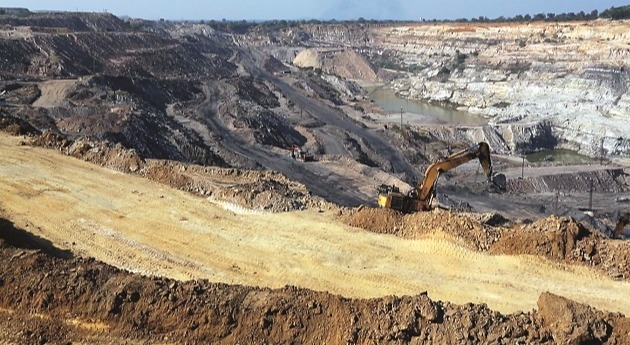
A coal mine in Chandrapur district of Maharashtra, adjacent to the Tadoba-Andhari Tiger Reserve. Photo Courtesy: Sharon Guynup
Sand: Slipping Through Our Fingers
In April 2016, Sanctuary highlighted the deadly battle that is underway between the nation’s sand mining mafia and those who stand in their way. A year on, the problem has intensified, with lives lost, landscapes altered and little reassurance of law enforcement. The victims of illegal sand mining in the past year include two young children who drowned in a water-filled, sand pit in Gaya, Bihar; a police team in Rajasthan, who survived an attack that sent their vehicle plummetting down a 15-metre-deep gorge when they tried to apprehend illegal miners; and the assasination of journalist Tarun Mishra in Uttar Pradesh, reportedly for blowing the whistle on illegal sand mining operations in Sultanpur district. Sand is the principal ingredient in the manufacturing of cement, a global industry that has multiplied three-fold in the last two decades in lieu of the construction boom. This makes legal and illegal sand mining a highly-lucrative business, and unsurprisingly much of it is run by powerful businessman and bureaucrats in the country. For example, in December 2016, India’s Central Bureau of Investigation arrested Tamil Nadu-based sand mining baron Shekhar Reddy after discovering 133 crores of unaccounted cash and 177 kg. of gold during a raid of his properties. Reddy has powerful political links and was alleged to enjoy the patronage of late Chief Minister Jayalalithaa. The impacts of sand mining stretch far beyond the destruction of beaches, and can include changes in the morphology of riverbeds, increase in bank erosion, loss of wildlife habitats, the pollution and lowering of groundwater, increased concentration of suspended sediments in rivers, and a plethora of other delterious effects, many of which are outlined in the ‘Sustainable Sand Mining Management Guidelines 2016’ that was released by the Ministry of Environment, Forest and Climate Change. While this particular document is merely indicative and not binding, there are indeed a number of legislations in place to regulate the extent of sand mining in the country. However, law enforcement remains a huge challenge. Given the scale of profit in the business, and the insidious patronage that the sand mafia enjoys from those in power, the crisis continues to snowball. The blood-chilling murders of those individuals, both within and outside of the government, who confront the mafia is a blaring alarm bell that clearly underscores the dangerous development philosophy that favours profit over human life and environmental security.
Linear Projects
The National Democratic Alliance (NDA) has been approving roads, highways, transmission lines and, pipelines without adequate application of mind. Many of these linear projects will also leave in their wake – tattered forest corridors. The four-lane National Highway 7 (NH7), connecting Kanha to Pench, and Kanha to Nagzira Tiger Reserves, exemplies this problem. Despite recommendations from the forest bench of the Central Empowered Committee and thousands of citizens signing petitions against the widening, tree-felling and approvals have continued unabated. The NH6 and NH7 are already responsible for the destruction of six tiger corridors. In her article, Lines of Blood (Sanctuary Asia, Vol. XXXV No. 6, June 2015.), Neha Sinha writes, “As per data submitted to the Lok Sabha, at least 16 tiger reserves have one or more highway passing through them. As per the Make in India programme, it is likely that these highways too will be expanded. It is now imperative to have an integrated vision and avoid areas that pass through irreplaceable habitats. Where bypasses are not available, existing highways should be repaired but not widened.” She adds, “Despite their sheer numbers, and their recorded impact, linear projects, especially roads and railways, have been fast-tracked by the NDA government, arguing that they do not have much impact. While there is no formal definition of linear projects, these include transmission lines and pipelines, roads and highways, railways and canals. Typically, linear projects pass through several states. The government has recently relaxed a gamut of clearance requirements for these projects. For instance, all linear projects will be ‘fast-tracked’, gram sabha clearance will not be required for them, and the work on such a project can start without forest clearance. In border areas, linear projects will not require scoping or public hearings as part of their Environmental Impact Assessments.”
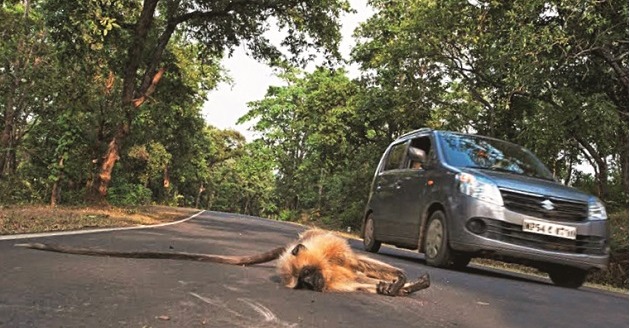
A linear intrusion through a forest in Madhya Pradesh claimed the life of this grey langur. Photo Courtesy: Rajarshi Banerji
Yes, There is a Better Way
Continuing with the policy of easing business, the central government recently launched a website for obtaining coastal regulation zone clearances. A similar online system for forest and environment clearances was also launched in 2014. According to the MoEFCC, 90 per cent of project applications were granted environmental clearance by the government in 2015. How long will the Indian public remain mute spectators to the destruction of their own life-support systems at the hands of destructive projects promoted in the name of ‘national interest’? The real national priority today is to find ways to improve the quality of life of Indians by offering them food, clothing and shelter without destroying their water sources, grasslands, forests, wetlands, coasts, and deserts.
To put it simply, the survival of the Indian subcontinent and its 1.3 billion people hinges on our ability to adapt and mitigate the worst impacts of climate change by working with nature to detoxify our air and water and restore productivity to our soil. Young India is acutely aware of both the problems and their solutions. It remains to be seen whether our current leadership takes a leaf out of the book of the colonisers of yore or the visionaries who sacrificed their lives to guarantee a better future for generations unborn.

Photo: Vivek Sinha.
The Fall of a Bird
By Pramod Patil
The Great Indian Bustard (GIB) has sadly become an ultimate example of what happens to a magnificent species if we fail in timely implementation of an integrated, landscape-level approach to wildlife conservation. In fact, there is no other species that has suffered more from a tiny, site-specific conservation approach than the GIB. Once commonly seen in suitable grasslands across the Indian subcontinent, the GIB now survives in tiny pockets in five states and their global population is no more than around 200 individuals.
Rajasthan, having the largest global population of the GIB (in Jaisalmer district), has effectively initiated ‘Project Bustard’, which focuses on the protection of breeding sites. Along with these site-specific protection initiatives, there is an urgent need for landscape-level conservation by involving local communities in direct conservation measures such as developing anti-poaching watchdog networks, village wildlife watcher programmes, decentralised ecotourism, and incentivised and controlled grazing regimes in key breeding sites. The Bombay Natural History Society (supported by BirdLife International, Royal Society for Protection of Birds and Whitley Fund for Nature) has initiated conservation programmes based on these principles in association with the Forest Department, which seem effective in handling some of the main threats to these iconic birds.
One of the most important threats that had gone unnoticed in the bustard studies done in the past is that of collisions with powerlines. There is enough evidence that emphasises the urgent need of landscape-level mitigation measures against linear developmental projects such as powerlines that kill many endangered bird species including the GIB. Over the past decade or so, a total of four GIBs have been reportedly killed because of collisions with powerlines. This is a grave threat that needs to be addressed, especially in Jaisalmer district in Rajasthan, which is a nationally-recognised site for the rapid growth of the renewable energy sector. Both the GIB and energy sector can grow and coexist, provided that enough measures are taken to protect the bird without compromising on national interest. Identifying key GIB sites in relation to transmission lines, safe underground passage of powerlines around key GIB areas, marking of existing powerlines in high-risk flight corridors and completely avoiding the wind farms proposed in close proximity of key sites are some of the urgent actions identified by the IUCN Bustards Specialists Group and the BNHS. The disappearance of the GIB from around six important sites (all under the Protected Area network) in the five states that offer it refuge hints towards a conservation strategy that should go beyond the tiny Protected Areas approach.
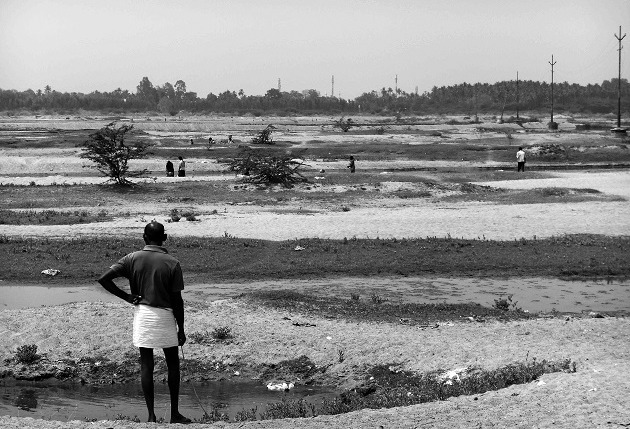 Photo: Cibi Santhosh Ramasundaram/Public Domain.
Photo: Cibi Santhosh Ramasundaram/Public Domain.
Human-made Drought in South India
By Sruthisagar Yamunan
While the nation was busy with election campaigns in five states, a disaster of serious proportions was bubbling in south India. Karnataka, Tamil Nadu and Kerala are in the midst of a serious drought, which officials term as the second worst in history.
Numbers confirm the claim. According to the weekly report that the Central Water Commission put out on February 23, 2017, south India is by far the driest region at the moment. The 31 major reservoirs together hold only 22 per cent of their capacity. In other words, these states are facing a 78 per cent water deficit.
The drought is the result of the failure of both the south-west as well as the retreating monsoons last year. When rivers and reservoirs dry up, the groundwater table cannot be far behind. In Tamil Nadu, groundwater level is down by 6.5 m. in some areas compared to last January. In Karnataka, farmers are digging borewells that are 243 m. to 304 m. deep and are still unable to find water. In Kerala, the government has imposed restrictions on water usage. There is no water for irrigation in districts like Palakkad. The Periyar reservoir is only six per cent full.
Failed monsoon is the immediate reason for the drought, but it is not the only one. All three states can be charged with neglecting their waterbodies. In Tamil Nadu, farmers have continuously accused the government of failing to desilt lakes and ponds and thereby letting excess water during floods go waste into the sea. The Noyyal river has been rendered unusable in few stretches due to high levels of pollution caused by textile units in Tirupur.
In Karnataka, the Cauvery has become the dumping pit for industries. The river is being exploited to the bone to satisfy the growing drinking-water needs of Bengaluru, a city which has let hundreds of small lakes be encroached by real estate sharks.
A drought will have a cascade effect on the economy and the society. Agriculture production is bound to go down when there is no water. This in turn will push inflation up, coming back to hurt farmers who already face mounting debts. Both in Karnataka and Tamil Nadu, hundreds of farmers have committed suicide in the last six months.
Wildlife will not be spared either. When humans have no drinking water to access, the plight of animals in wildlife sanctuaries becomes less of a priority.
Politically, this could lead to inter-state water wars in the corridors of the judiciary, a repeat of 2016. But unless the governments sit down and look at a long-term plan, where they make agriculture and industries less water intensive and decisively move to reclaim waterbodies from encroachers, drought and floods will remain a never-ending cycle in these times of climate change.


 Photo: Akash Dharankar.
Photo: Akash Dharankar. 






 Photo: Cibi Santhosh Ramasundaram/Public Domain.
Photo: Cibi Santhosh Ramasundaram/Public Domain.